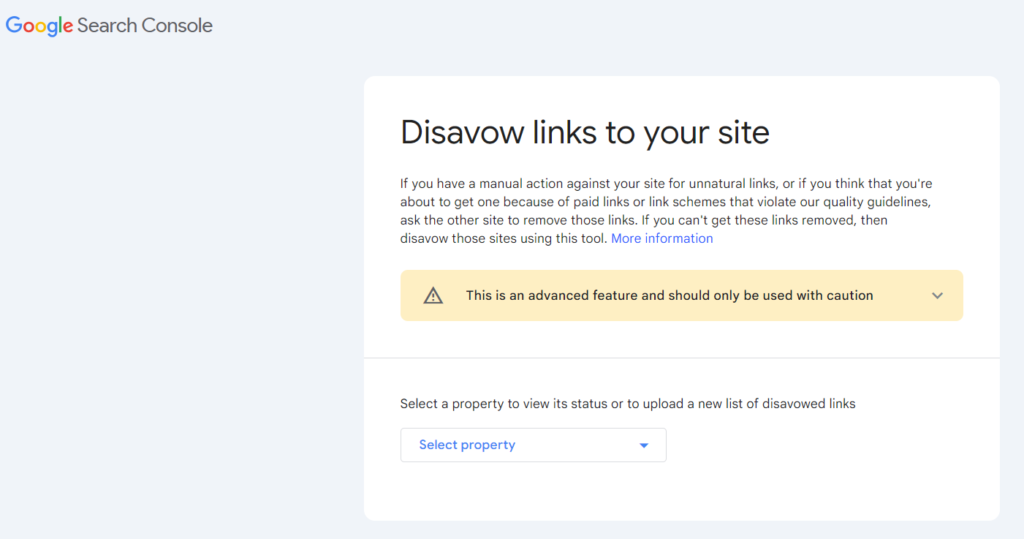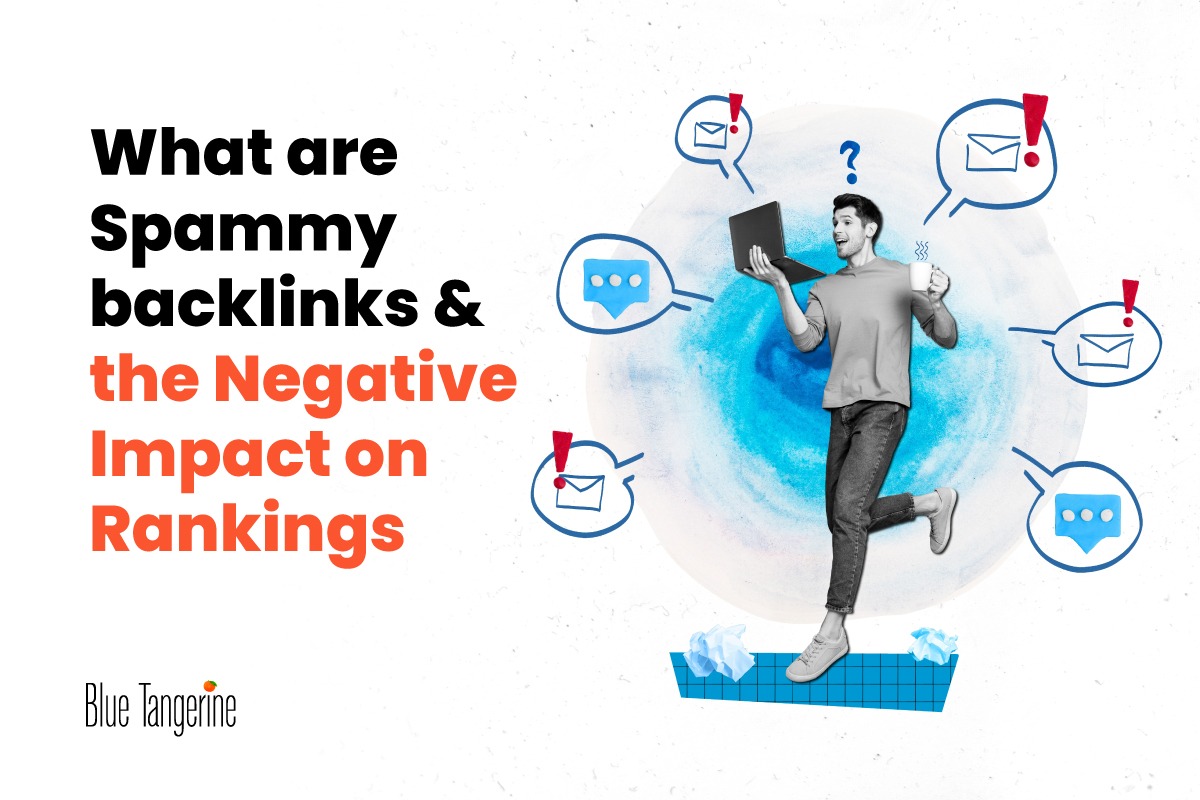In the intricate world of search engine optimization (SEO), backlinks are crucial for enhancing a website’s visibility and credibility. However, not all backlinks are created equal. Among the myriad of links pointing to your site, lurks a nefarious breed known as spammy backlinks. In this article, we delve into the realm of spammy backlinks: understanding their nature, recognizing their impact, and implementing strategies to combat them effectively.
Spammy backlinks refer to low-quality, irrelevant, or manipulative links pointing to a website. These links are typically generated through black hat SEO techniques with the sole purpose of artificially inflating a site’s search engine rankings. At their core, spammy backlinks embody a deceptive and manipulative facet of SEO. These links originate from sources employing nefarious tactics to artificially bolster a website’s search engine rankings. Unlike genuine backlinks, which are earned organically through merit, spammy backlinks are engineered through dubious means, often in violation of search engine guidelines.
Characteristics
To identify spammy backlinks, one must be cognizant of their defining traits:
Irrelevance: Links originating from websites that are unrelated to the content or niche of your site.
Low Authority: Links coming from domains with poor domain authority or trustworthiness.
Manipulative Tactics: Links obtained through link schemes, link farms, or other deceptive practices aimed at manipulating search engine algorithms.
Over-Optimization: Excessive use of anchor text with exact-match keywords, often done to manipulate search rankings.
Unnatural Patterns: Sudden spikes in backlink quantity or suspicious linking patterns.
Negative Impact on Rankings
The negative impact of spammy backlinks on a website’s rankings cannot be overstated. It casts a looming shadow over the meticulous SEO efforts, bringing forth a cascade of detrimental consequences:
Google Penalties
Among the most severe repercussions is the wrath of search engine giants like Google. Websites found guilty of engaging in manipulative link-building practices face punitive measures. These penalties can range from a stark demotion in search rankings to the ultimate punishment of expulsion from search results altogether. The ramifications are dire, as they inflict significant blows on the website’s organic visibility, impeding its ability to attract valuable organic traffic and potential customers.
Erosion of Trust and Authority
The presence of spammy backlinks tarnishes the integrity and authority of a website. In the discerning eyes of both search engines and users, websites tainted by such associations lose credibility and trustworthiness. The erosion of trust is a slow but corrosive process, leading to a tangible decrease in organic traffic over time. Users are wary of engaging with websites perceived as unreliable or untrustworthy, resulting in diminished click-through rates and conversions. Ultimately, the site’s growth and viability are compromised as it struggles to maintain a foothold in the competitive digital world.
In essence, the ramifications of spammy backlinks extend beyond mere fluctuations in search rankings. They strike at the very core of a website’s integrity, sowing seeds of doubt and suspicion among both search engines and users. Mitigating these consequences requires proactive measures to identify and address spammy backlinks promptly, safeguarding the website’s reputation and preserving its long-term success.
Identifying Spammy Backlinks
Tools and Techniques
Identifying spammy backlinks is a crucial aspect of maintaining a healthy backlink profile and safeguarding your website’s SEO integrity. Fortunately, there are several tools and techniques available to assist in this endeavour:
Google Search Console: Leveraging the “Links to Your Site” feature within Google Search Console provides valuable insights into your website’s backlink profile. By monitoring and analysing incoming links, webmasters can identify potential spammy backlinks.
Look for suspicious patterns such as a sudden influx of low-quality links or links originating from irrelevant sources. This tool serves as a foundational resource for gaining visibility into your site’s link profile and identifying potential areas of concern.
Backlink Analysis Tools: Robust platforms like Ahrefs, Moz, and SEMrush offer advanced backlink analysis tools that delve deeper into the intricacies of your backlink profile. These tools provide comprehensive metrics such as domain authority, anchor text distribution, and link quality, allowing webmasters to identify spammy backlinks with precision.
By scrutinising key indicators of link quality, such as the authority of linking domains and the diversity of anchor text, these tools enable webmasters to pinpoint and address spammy backlinks effectively.
Manual Review: While automated tools provide valuable insights, a manual review of incoming links remains an indispensable technique for identifying spammy backlinks. Conducting a hands-on assessment allows webmasters to evaluate the relevance, authority, and overall quality of each backlink.
Look for signs of manipulation or irregularities, such as excessive use of exact-match anchor text or links from suspicious sources. While time-intensive, manual review offers a nuanced understanding of your backlink profile and ensures thorough identification of spammy backlinks.
Removing spammy backlinks is essential for maintaining the credibility and authority of your website. Once identified, webmasters can take proactive steps to address these detrimental links:
Disavow Tool: Google’s Disavow Tool empowers webmasters to dissociate from spammy backlinks and communicate their disavowal to search engines. By compiling a disavow file containing the URLs of offending backlinks and submitting it to Google, webmasters signal their intent to distance themselves from these harmful associations. While not a guaranteed solution, the Disavow Tool provides a mechanism for mitigating the impact of spammy backlinks on search engine rankings.

Outreach to Webmasters: In some cases, reaching out to the webmasters of sites hosting spammy backlinks can yield positive results. By diplomatically requesting the removal of offending links and providing evidence of their negative impact, webmasters may succeed in having these links removed voluntarily. While this approach requires time and effort, it offers a proactive means of addressing spammy backlinks at the source.
Preventing spammy backlinks is a proactive endeavour that requires a strategic approach and adherence to best practices. Here are some key strategies to mitigate the risk of spammy backlinks:
Vigilant Link Building
Adopting a proactive stance towards link building is paramount to preventing spammy backlinks. Instead of chasing quantity, prioritize quality when acquiring backlinks. Focus on cultivating relationships with reputable and authoritative sources within your niche. By building genuine connections with other website owners and producing valuable, shareable content, you naturally attract high-quality backlinks. This approach not only enhances your website’s credibility but also reduces the likelihood of acquiring spammy links.
Regular Backlink Audits
Regularly auditing your backlink profile is essential for identifying and addressing any emerging spammy backlinks promptly. By conducting routine assessments of your backlinks, you can detect any suspicious or low-quality links and take appropriate action to mitigate their impact. Staying vigilant and proactive in monitoring your backlink profile allows you to nip potential issues in the bud before they escalate into more significant problems.
Best Practices for Building Quality Backlinks
Content Relevance
Ensure that the content on your website is relevant, informative, and valuable to your target audience. Quality content naturally attracts backlinks from authoritative sources. By consistently producing high-quality content that addresses the needs and interests of your audience, you increase the likelihood of attracting organic, relevant backlinks.
Authority of Linking Domain
Prioritize acquiring backlinks from websites with high domain authority and credibility within your industry. Links from reputable sources carry more weight in the eyes of search engines and are less likely to be considered spammy. Focus on building relationships with established and respected entities within your niche to secure quality backlinks that contribute positively to your website’s SEO efforts.
Natural Link Building
Instead of resorting to manipulative tactics or spammy practices, natural link building emphasizes the cultivation of genuine relationships and the creation of valuable, shareable content.
Here are some key components of natural link building:
Content Marketing: Producing high-quality, relevant content is at the core of natural link building. By creating content that resonates with your target audience and provides value, you increase the likelihood of earning organic backlinks. Whether it’s informative blog posts, engaging videos, or insightful infographics, compelling content attracts attention and encourages others to link back to your website.
Guest Blogging: Collaborating with other websites and contributing guest posts is an effective way to earn natural backlinks. By offering valuable insights and expertise within your industry, you not only establish yourself as a thought leader but also gain exposure to new audiences. When done authentically and ethically, guest blogging can result in genuine backlinks that contribute positively to your site’s SEO.
Relationship Building: Relationship building with website owners, bloggers, and influencers is crucial for natural link building. Engage with others in your niche through networking, social media, and industry events to create opportunities for organic backlinks. Fostering meaningful connections can enhance your site’s credibility and authority.
Conclusion
In conclusion, spammy backlinks represent a significant threat to the online visibility and credibility of websites. However, by understanding their nature and implementing proactive strategies for identification and prevention, webmasters can safeguard their sites against these harmful effects.
Prioritizing quality over quantity, conducting regular backlink audits, and adhering to best practices for link building are essential steps in maintaining a healthy backlink profile and maximising SEO performance. In the ever-evolving world of SEO, staying vigilant, adaptive, and committed to natural link building is key to staying ahead of the curve and achieving long-term success.




